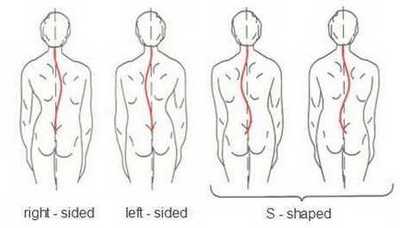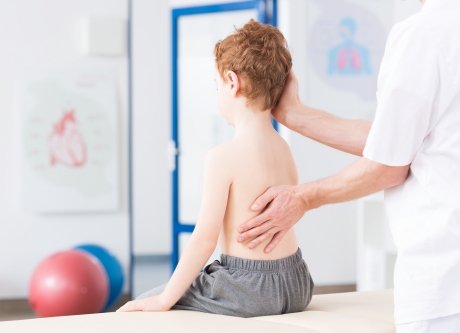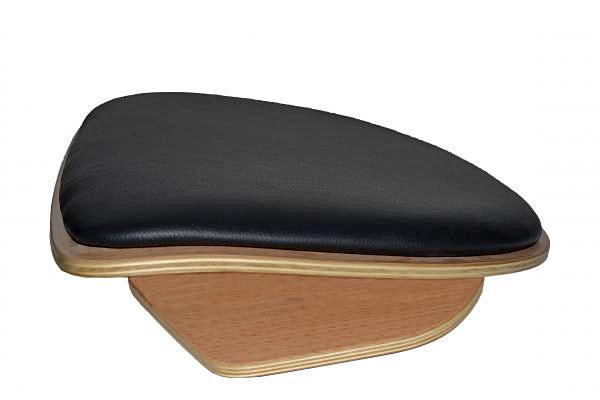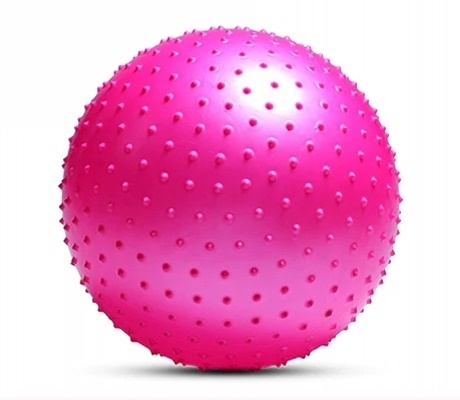The curvature of the spine is one of the most common problems in medicine, which almost everyone faces. At the same time, the most common form of curvature is children’s scoliosis, which forms in early or adolescence. How to treat or prevent it?
Fortunately, in children and adolescents, the spine continues to form and remains plastic, so this pathology of the musculoskeletal system can be completely healed.
The main thing, in this case, is to have an extensive understanding of the problem, to detect it in time, and start treatment as soon as possible.
What is scoliosis?
Children’s scoliosis is a common disease in which the so-called lateral curvature of the spinal column occurs. In other words, a deviation of a part of the vertebrae from the natural axis occurs in a certain area of the spine.
The development of scoliosis in children, on average, begins between 5 and 14 years old, initially, the pathology is hardly noticeable, but as it progresses, serious posture disorders occur, the patient begins to experience discomfort, and many complications may develop.
What causes scoliosis?
Scoliosis is not for nothing considered a child’s problem, the appearance, and development of the disease occur precisely in childhood adolescence. This is due to the stage of active growth during this period, as well as the fact that the child’s spine remains plastic and is more susceptible to deformation.
There are two types of children’s scoliosis: congenital and acquired.
The causes of scoliosis are as follows:
- Non-observance of posture – the most common cause of the development of scoliotic curvature; we are talking about situations when children sit in the classroom or at the computer in the wrong position, stoop, bend over when walking, etc.;
- Uneven distribution of loads on the back or excessive physical activity; in the first case, when children wear backpacks on one shoulder, in the second – premature engagement in heavy sports, lifting weights, etc., with excessive loads, the lumbar vertebrae are often damaged, which also leads to the development of scoliosis;
- A weakness of the muscular system of the back;
- Spinal injuries sustained during childbirth; (in this case, the pathology is considered congenital) or during life;
- Sedentary lifestyle: physical inactivity leads to atrophy of the vertebral muscles, which cannot perform their function.
The above only the most common causes and factors are listed for the development of scoliosis in children, there are many more. Besides, according to statistics, the pathological process often develops in girls.

Types of scoliosis
It is important to understand that the age classification of scoliosis strongly influences treatment. After all, the types of scoliosis before adolescence are subject to complete cure (in most cases), while in an adult it is extremely difficult to treat, and it is almost impossible to achieve a complete restoration of the previous posture.
As for the division into types, in this case, it all depends on the nature of the curvature, and the classification is as follows:

Symptoms
It is possible to identify the general symptoms of the disease, which appears in most cases:
- The first and main sign of scoliosis in school children and other children is considered an aesthetic defect, that is, curvature; we are talking about the already mentioned violations of posture, asymmetry of the shoulder girdle and pelvic bones, bulging of the shoulder blades, stoop, etc.;
- The lowered head is also considered a sign of scoliosis;
- With the development of the disease, the first painful sensations appear; the child complains of recurrent pain, but often not in the spinal column, but in the neck, lower back, shoulders; this is due to the incorrect distribution of the load on the muscles;
- The curvature affects the chest, causing impaired breathing, due to which the child may complain of shortness of breath, including with light exertion;
- The general condition worsens, this is manifested by increased and accelerated fatigue, impaired coordination of movements, increased absent-mindedness, headaches, palpitations, sometimes worsening sleep.
We must not forget that with serious violations of posture, the attitude towards the child in society, especially among peers, changes. This often leads to the development of depressive states, withdrawal, decreased self-esteem, etc.
Scoliosis assessment
Usually, the first diagnosis of scoliosis in children is made at school during a routine medical examination. Besides, the problem can be found at home, however, when it comes to the initial stage of the disease, not every parent will be able to reliably determine the curvature.
For this reason, it is better to consult a doctor who will accurately determine the curvature of the spine in children, determine the degree of progression of scoliosis, etc.

How to treat and prevent?
Remember that scoliosis is a dangerous progressive disease that threatens the vital functions of all systems of your child’s body.
In addition to the deformity of the spine and the entire musculoskeletal system, the acquisition of an ugly figure, scoliosis leads to compression and displacement of internal organs, dysfunction of blood vessels.
It is possible to identify the general symptoms of the disease, which appears in most cases. It is necessary to begin the treatment of scoliosis in adolescents as soon as the problem has been identified. For treatment, it is necessary to consult a doctor who will assess the degree of curvature and, based on diagnostic data, decide which methods to combat pathology should be applied.
1. Gymnastics, physiotherapy exercises
Physiotherapy is aimed at improving blood circulation and metabolic processes in the area of spinal deformity. Also, depending on the method used, physiotherapy improves the contractile functions of the back muscle corset, vertebral plastics, stimulates the muscles and mobility of the vertebrae, eliminates muscular dystrophy, etc.
It is very important to choose the right set of exercises and accurately dose the load, therefore, it is important to find an experienced specialist for gymnastics and physiotherapy exercises.
2. Massage
Massages, which must also be done by a specialist, eliminate pain, reduce tension and relax muscles, strengthen the muscular corset, as well as improve blood circulation, metabolic processes, and alignment of the spine.
3. The use of special corsets
Treatment of scoliosis in children with the use of special corsets allows to reduce the load on certain areas of the back and also contributes to the gradual alignment of the spine and posture correction.
Before buying a corset, be sure to consult with your doctor, because these devices come in different shapes and characteristics, are selected individually for each case of scoliosis.
4. Kinesio taping
This is a method that is somewhat similar to wearing a corset. Kinesio taping for scoliosis in children involves the application of special elastic bands (tape plasters) to certain areas of the back, which fix the muscle corset.
The tapes eliminate painful sensations, reduce the load on certain parts of the back, but at the same time practically do not hinder movement.

Can scoliosis be cured at 16?
As most experts say, at the age of 16, the spine still does not fully pass the stage of ossification, it still remains quite mobile and amenable to correction. For this reason, if you take treatment seriously and adhere to the recommendations of doctors strictly, the chances of recovery are high.

Prevention of scoliosis
Scoliosis in children is a common and rather dangerous pathology. But with this disease in 90% of cases, all risks can be minimized. To do this, you need to start treatment as early as possible or completely prevent the development of curvature by simple preventive methods.
Already from 5-7 years of age, special attention should be paid to the correction of posture in children and adolescents. At this age, children begin to sit a lot on lessons, when doing homework. This is where spinal problems usually begin.
Unless we are talking about congenital scoliosis, you can almost always prevent this disease from developing. To prevent it, you need to start from an early age; this task completely falls on the shoulders of parents, who must monitor the child and ensure its healthy development.
Read More – Scoliosis in Children
Prevention of children’s scoliosis is as follows:
- School-aged children acquire scoliosis from improper sitting at the table, so teaching the child to sit correctly is important to prevent curvature. Make sure that the child keeps his back straight at all times, when walking, in a sitting position (Spinal Exerciser ‘Dr. Kiparis’);
- It is necessary to provide the child with a comfortable working and sleeping place;
- The child should sleep on a level, moderately hard surface; the best choice is an orthopedic mattress;
- It is important to play sports from an early age, ideally, we are talking about swimming, gymnastics, dancing, horse riding, etc.;
- Do not allow the child to lead a sedentary lifestyle, it is important not only to play sports but also to walk often;
- Use a variety of exercises to strengthen back muscles, improve blood circulation in the spine and pelvic organs (Back Stretcher Lumbar Back Support);
- Use a special corset that will only support your posture, not allowing you to slouch and hunch over;
- Control over the load on the spine: it is not recommended to lift weights or asymmetrically load the spine;
- Prevention of injuries.
Spinal exerciser ‘Dr. Kiparis’
Spinal Exerciser ‘Dr. Kiparis’ is a great training tool for your SPINE and ABDOMINAL muscles when you just sit.
- Normalizes blood circulation in all tissues and organs of the human body;
- Provides the necessary nutrition for the bone and cartilaginous tissues of the spine;
- Ensures the correct position of the spine and even corrects minor pathologies that it contains;
- Serves as the prevention of osteochondrosis, radiculitis, scoliosis.
Suitable for children and adults.
Back Massager Lumbar Back Support “The Bridge”
Move on to exercises for lower back pain.
This back massager can help you to relax and instantly relieve back pain due to tight muscles, excessive flexion, and poor spinal alignment.
It is designed to stretching your back easily, safely, affordable, and enjoyable.
Simple and user-friendly, adjustable, and portable, you can use it anywhere you want.
Suitable for children and adults.
Yoga Ball Pilates Exercises Ball Spiky Massage Ball
Yoga ball with a massage effect allows you not only to play sports, but it also improves the blood supply to the muscles and subcutaneous fat layer, strengthens the spine, raises the tone, and the training itself becomes fun and varied.
- Anti-burst system
- Very versatile to use
- Massage effect





Leave a Reply